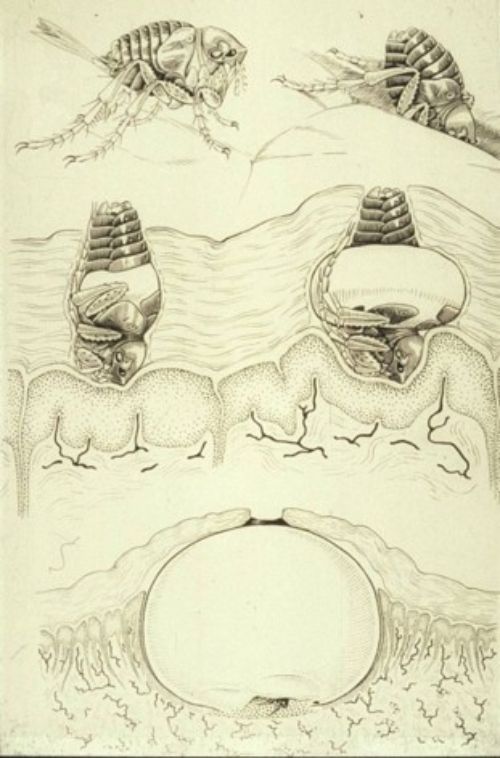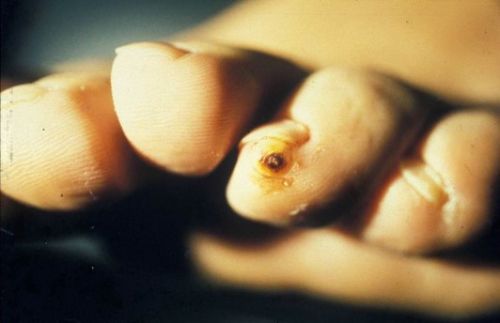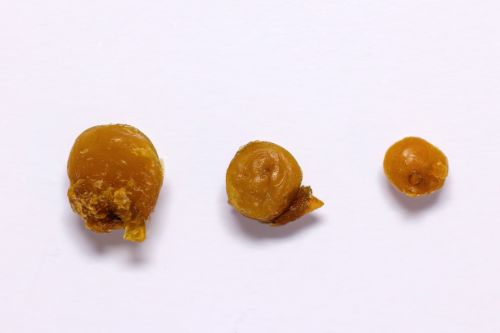Introduction to Diagnostic Medical Parasitology
Tunga penetrans

Morphology
- Insect: Three part body (head/thorax /abdomen) and 6 legs
- oval insects
- laterally compressed
- Very small (1 mm)
- No wings
- Holometabolous development
- Three pairs of legs (hind legs for jumping)
- and a triangular head
- Both females and males feed on blood
- Not host-specific
- Immediately leave dead hosts (reservoirs)
- Live in sandy soils
Life cycle:
- Complete metamorphosis (holometabol development) from egg to pupae 23-47 days
- Female lays 20-25 eggs per day
- Only adults are blood feeder, become 1 ½ years old
- Eggs, larvae and pupae are found on the ground or in bedsteads (larvae feed on organic material)
- Adult flea emerge from the cocoon by an outside stimuli (vibrations, sound, heat, carbon dioxide)
- Distribution: Caribbean, South America, Africa (south of the Sahara)
Diseases
- Not disease vectors but painful as they embed in the skin
Prevention:
- Wearing shoes
Egg of Tunge penetrans

Tunga penetrans female after section
